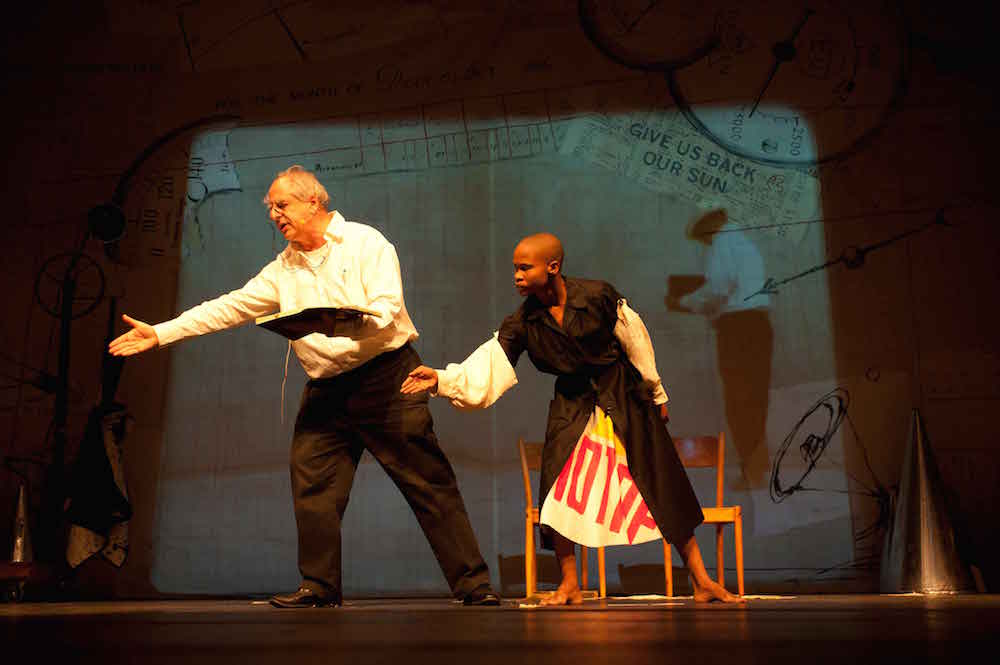Kenyan-based architect Naeem Biviji of Studio Propolis was part of a lengthy list of speakers at this year's Design Indaba.
The last week of February in Cape Town presented itself as the mecca for international art and design.
With two art fairs (That Art Fair and Cape Town Art Fair) and two design-related events (Guild International Design Fair and Design Indaba), as well as the launch of the Zeitz Museum of Contemporary Art Africa, the city bowl was a cluster of artwork from all over the country, continent and world. And then there were all the offshoot events to the events, where you were likely to spend your time: eating, meeting, critiquing, dancing, pretending to be interested, or actually being totally engaged.
If you were in town for one show, you’d have most probably spread yourself fairly thin trying to see another or all during the course of the week. But if you got your hands on a ticket to the Design Indaba – which happens to be one of the most expensive conference tickets in South Africa at R3 065 for a one-day pass – there’s a big chance you’d have stick around the three-day conference and its side gigs to get your money’s worth.
Celebrating its 20th anniversary, the Design Indaba Conference – located at the International Convention Centre (ICC) – featured a mélange of speakers from various industries, such as visual art, architecture and cuisine to name a few.
However, the same mix of racial groups on stage was not really found in the faces of those in the auditorium audience seats nor in some of the Indaba’s offshoot events. On the periphery of the ICC’s window panes, Design Indaba hosted its music circuit and film festival, as well as the premiere of legendary artist William Kentridge‘s chamber opera, Refuse the Hour, at the City Hall.

A still from William Kentridge’s Refuse the Hour. (Supplied)
So, as speakers such as Burning Man co-founder Lee Harvey, Senegalese fashion designer Selly Raby Kane and UK design studio The Workers showed slides of their work and explained to audiences the approach to their design or experience and its effect on people, other speakers brought along their creations for audiences to see. Textile designer Sindiso Khumalo, who currently lives in the UK, presented her “Zulu Love Letter” collection of muted tones, bold prints and simple shapes.
Kentridge brought the the conference to a close with his on talk on “the importance of the margins” with an installation piece adapted from Refuse the Hour, to a standing ovation at the end of the three-day conference.
OTHER SPEAKER HIGHLIGHTS included maverick United States filmmaker Casey Neistat, who spoke about creating films and ads from real-life experiences. “I don’t know how to write,” the New Yorker told the audience, adding, and I paraphrase: What I know, is how to tell my story through filming my experiences. I don’t know how to sell a product for Nike, but I know how to share my story.
Through playing a series of the movies has made over the years, most of which are up on YouTube, Neistat – who dropped out of high school in grade 10 – shared that he had no formal film training and attributes that to what made him who he is today. “What happens when you’re not taught the right way … is that you’re forced to forge your own path.”
A day before, portrait photographer Omar Victor Diop from Senegal wowed crowds with a presentation that invoked Senegal’s artistic masters, starting with the country’s former president and poet Léopold Sédar Senghor.
“Our first president was an artist,” he shared, while projecting images of legendary writers like Senegalese anthropologist Cheikh Anta Diop, creative greats such as filmmaker Ousmane Sembène and movie Touki Bouki, which, he says, “is the best African movie and tells you a lot about where I come from”.
The Dakar-born artist went on to talk about his journey into photography and his latest series of self-portraits (Project Diaspora), which, he says, is an ode to West Africa’s portrait photography tradition and certain African figures in Europe who have been removed from history books.
OTHER NOTABLE MOMENTS
MOST BEAUTIFUL OBJECT
On Sunday, the Indaba announced that the Boomslang (the Centenary Tree Canopy Walkway) at Kirstenbosch National Botanical Gardens has taken the prize for the Most Beautiful Object in South Africa. Designed by Mark Thomas and Henry Fagan, the public chose the Boomslang out of 12 nominated works.
Read our story about the inspiration and “science” behind the structural design here.
MUSIC
Giving audiences a taste of what was to come at a night time event, Grantley Marshall, aka Daddy G from United Kingom music group Massive Attack, played the intro and outro to G Star Raw global brand director Shubhankar Ray’s Design Indaba presentation on Thursday.
Later on, during Design Indaba’s main music event, Side Show, which could have been better attended, Marshall gave a rousing performance while renowned Ghanaian rapper M.anifest blew the former Fez club roof off with his live band-backed show. The rapper and Angolan multimedia and performance artist Nástio Mosquito performed at short intervals during the conference also formed part of the Side Show line-up.
Other performances on the night’s line-up included Cape Town acts Sakawa Boys, Amy Ayanda and RVRW.
Past performance by Mosquito.